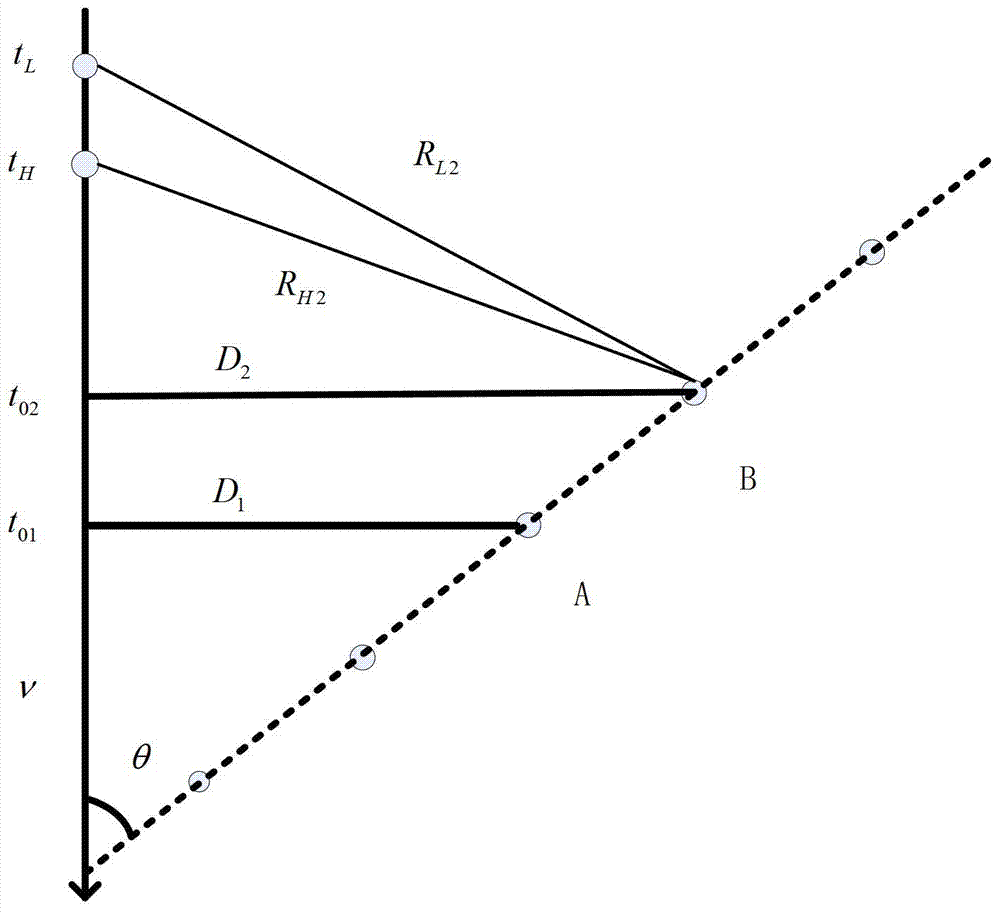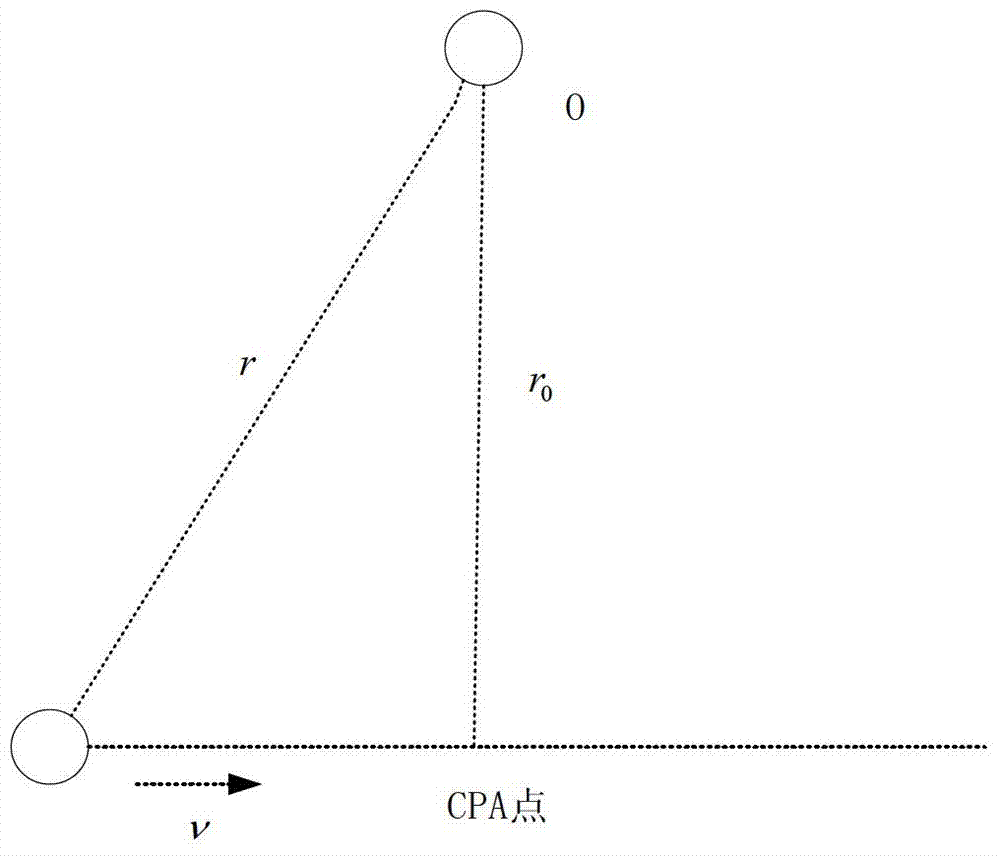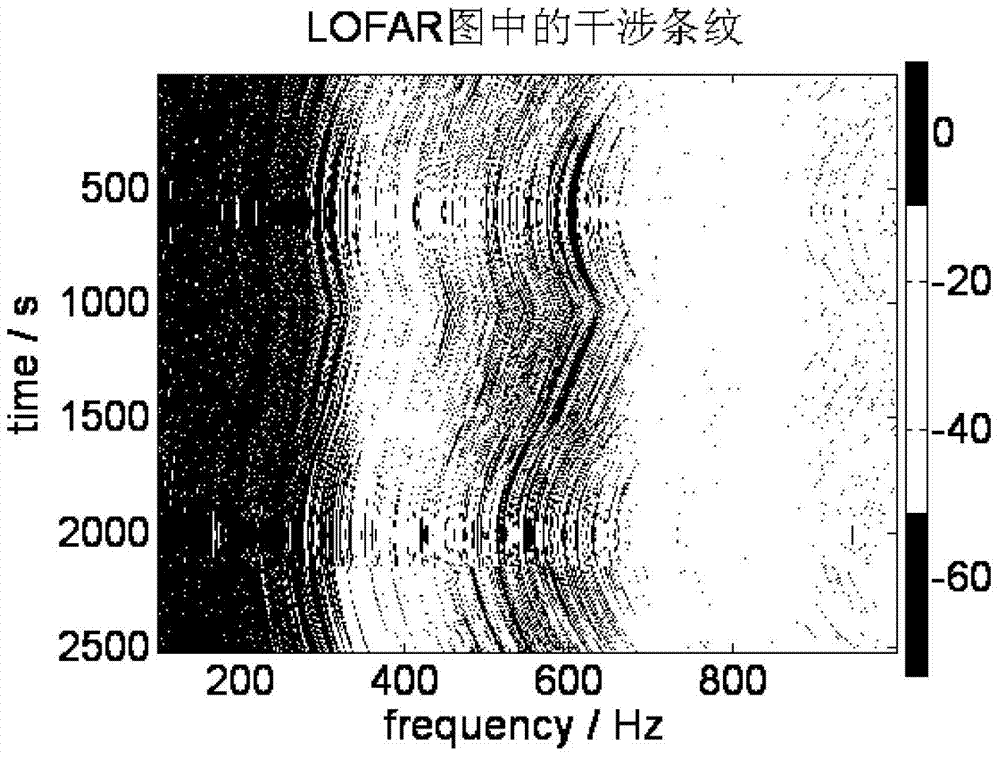Method for using underwater acoustic channel statistics invariant features to achieve passive ranging
An underwater acoustic channel and passive ranging technology, applied in the direction of using re-radiation, measuring devices, radio wave measuring systems, etc., can solve the problems of no environmental information, limitations, uncertainties, etc., and achieve the effect of improving the ranging accuracy
- Summary
- Abstract
- Description
- Claims
- Application Information
AI Technical Summary
Problems solved by technology
Method used
Image
Examples
Embodiment 1
[0026] Such as figure 1 and 2 As shown, the device of the present invention based on the theory of waveguide invariants and adopting the dual array element model for passive ranging method includes two receiving hydrophones at the A and B array elements. When the target moves at a constant speed in a certain direction, the two receiving hydrophones The receiving hydrophone respectively receives the broadband acoustic signal from the target, and analyzes the power spectrum of the received signal at each discrete time t, that is, obtains a slice parallel to the horizontal axis (frequency f axis) on the LOFAR diagram, and the time of the slice The process is integrated into a LOFAR graph ( image 3 ). When the signal-to-noise ratio is high, a single hydrophone can measure LOFAR images with clear interference fringes; for remote targets, when the signal-to-noise ratio is low, array signal processing must be performed, and LOFAR analysis of the tracking beam output can be obtaine...
PUM
 Login to View More
Login to View More Abstract
Description
Claims
Application Information
 Login to View More
Login to View More - R&D
- Intellectual Property
- Life Sciences
- Materials
- Tech Scout
- Unparalleled Data Quality
- Higher Quality Content
- 60% Fewer Hallucinations
Browse by: Latest US Patents, China's latest patents, Technical Efficacy Thesaurus, Application Domain, Technology Topic, Popular Technical Reports.
© 2025 PatSnap. All rights reserved.Legal|Privacy policy|Modern Slavery Act Transparency Statement|Sitemap|About US| Contact US: help@patsnap.com



